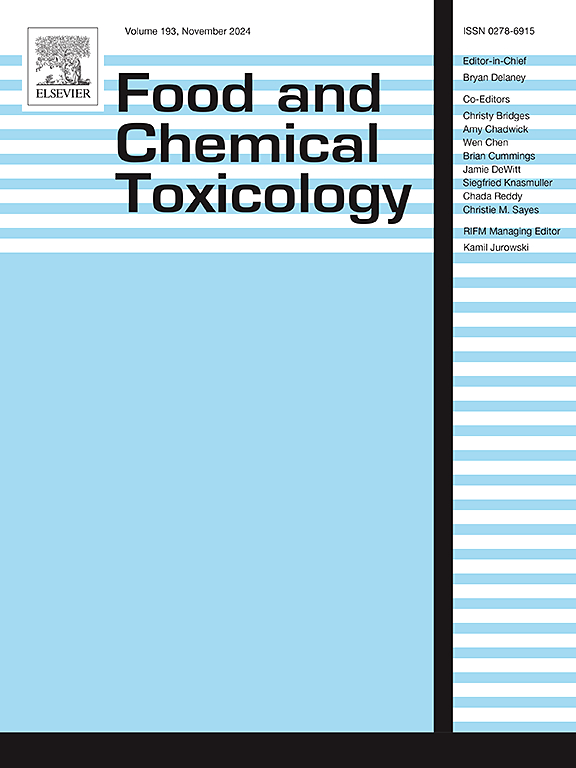Alterations in murine macrophage reactivity and bactericidal efficacy following exposure to an environmentally relevant mixture of organochlorine pesticide compounds
IF 3.9
3区 医学
Q2 FOOD SCIENCE & TECHNOLOGY
引用次数: 0
Abstract
While there are a number of factors which may promote chronic inflammation, a major factor is pro-inflammatory activation of resident and infiltrating macrophages. Recently, exposures to persistent organic pollutants including organochlorine (OC) pesticides have been implicated in dysregulation of macrophage function. However, the majority of these studies examined single compound effects and not mixture-based effects. To this end, the present study investigated the effects of an environmentally relevant mixture of three prevalent OC pesticide compounds on macrophage function. Briefly, J77A.1 macrophages were exposed to a mixture of dichlorodiphenyldichloroethylene, trans-nonachlor, and oxychlordane (DTO; 0.2–20 μM) for 24 h then effects on cell viability, caspase 3/7 activity, reactive oxygen species (ROS), mitochondrial membrane potential (MMP), antibacterial activity, and pro-inflammatory cytokine production were determined. Exposure to DTO significantly increased caspase activity and ROS production. The highest concentration of DTO significantly increased Staphylococcus aureus uptake while decreasing phagolysosome formation and bactericidal efficacy. Lastly, exposure to DTO significantly increased basal production of Mcp-1. Taken together, the present study demonstrates an environmentally relevant mixture of OC pesticide compounds increases macrophage ROS and Mcp-1 production while decreasing macrophage bactericidal efficacy which may adversely affect macrophage function and increase susceptibility to S. aureus infection.
求助全文
约1分钟内获得全文
求助全文
来源期刊

Food and Chemical Toxicology
工程技术-毒理学
CiteScore
10.90
自引率
4.70%
发文量
651
审稿时长
31 days
期刊介绍:
Food and Chemical Toxicology (FCT), an internationally renowned journal, that publishes original research articles and reviews on toxic effects, in animals and humans, of natural or synthetic chemicals occurring in the human environment with particular emphasis on food, drugs, and chemicals, including agricultural and industrial safety, and consumer product safety. Areas such as safety evaluation of novel foods and ingredients, biotechnologically-derived products, and nanomaterials are included in the scope of the journal. FCT also encourages submission of papers on inter-relationships between nutrition and toxicology and on in vitro techniques, particularly those fostering the 3 Rs.
The principal aim of the journal is to publish high impact, scholarly work and to serve as a multidisciplinary forum for research in toxicology. Papers submitted will be judged on the basis of scientific originality and contribution to the field, quality and subject matter. Studies should address at least one of the following:
-Adverse physiological/biochemical, or pathological changes induced by specific defined substances
-New techniques for assessing potential toxicity, including molecular biology
-Mechanisms underlying toxic phenomena
-Toxicological examinations of specific chemicals or consumer products, both those showing adverse effects and those demonstrating safety, that meet current standards of scientific acceptability.
Authors must clearly and briefly identify what novel toxic effect (s) or toxic mechanism (s) of the chemical are being reported and what their significance is in the abstract. Furthermore, sufficient doses should be included in order to provide information on NOAEL/LOAEL values.
 求助内容:
求助内容: 应助结果提醒方式:
应助结果提醒方式:


